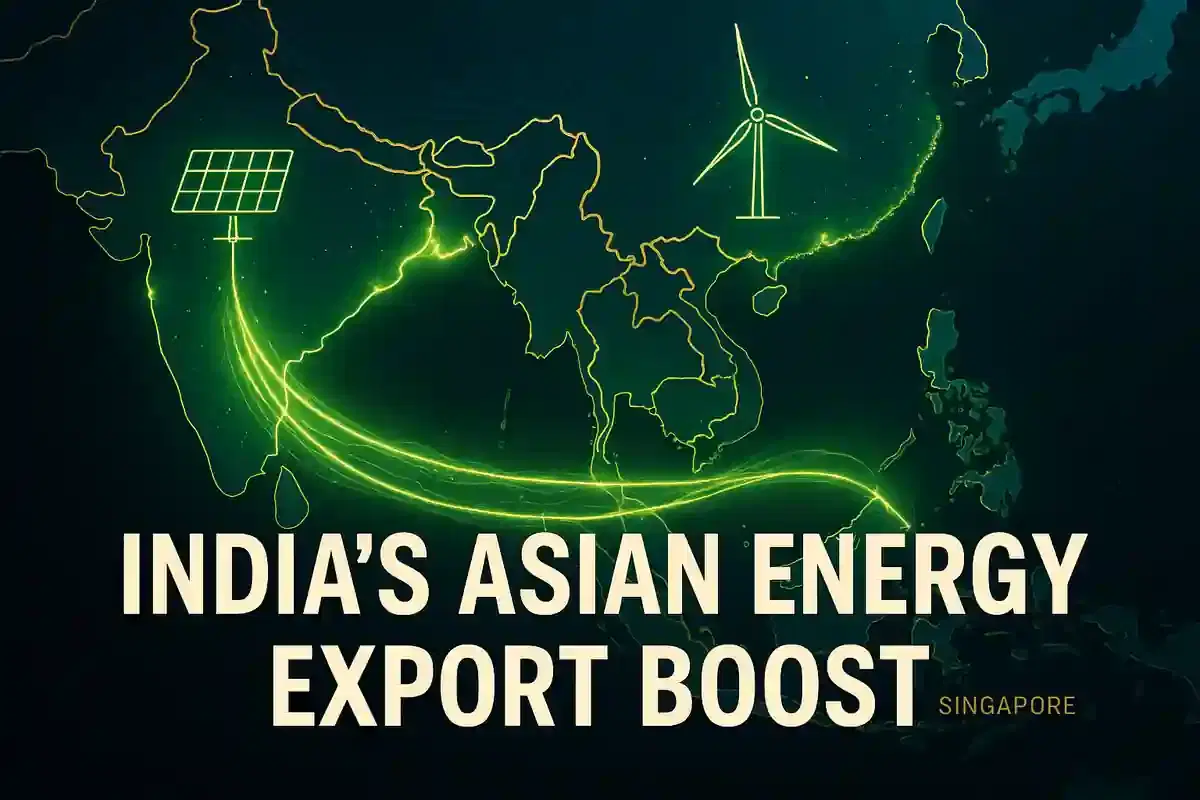India Eyes Southeast Asia Energy Export, Proposes India-Singapore Grid Link
Renewables
|
29th October 2025, 2:58 AM

▶
Short Description :
Detailed Coverage :
India is actively exploring pathways to accelerate the energy transition and bolster energy security across Southeast Asia, with Singapore as a starting point. Ghanshyam Prasad, Chairman of India's Central Electricity Authority, revealed plans for a direct grid interconnection between India and Singapore, an extension of the 'One Sun One World One Grid' initiative. This ambitious project aims to optimize the use of regional renewable resources, allowing India to export solar, wind, hydro, and pumped storage power to Singapore and potentially the wider region. The initial proposed capacity for this link is around 2,000 MW.
Impact: This initiative presents a significant opportunity for India's renewable energy sector, potentially creating new export markets and strengthening its position as a leader in green energy. For Southeast Asian countries like Singapore, it offers a way to diversify their power portfolios, reduce reliance on fossil fuels, and accelerate their transition to cleaner energy sources. The economic implications include potential for increased revenue for Indian energy companies and cost savings for energy consumers in the region. Rating: 8/10.
Difficult Terms: Energy Transition: The shift from fossil fuels to cleaner, renewable energy sources. Energy Security: Ensuring a reliable and affordable supply of energy. Interconnection: Connecting electrical grids of different regions or countries to allow power flow between them. Renewable Resources: Energy derived from natural sources that are replenished, such as solar, wind, and hydro. Optimal Manner: In the best or most efficient way. Statutory Body: An organization established by a specific law passed by the government. Pumped Storage Projects: A type of hydroelectric energy storage that uses pumps to move water from a lower reservoir to an upper reservoir during periods of low electricity demand and releases it to generate power during peak demand. Green Energy: Energy derived from natural sources that are replenished and do not produce harmful emissions. Decarbonisation: The process of reducing carbon dioxide emissions. GHG Emission Technologies: Technologies designed to reduce greenhouse gas emissions. Smart Grids: An electricity network that uses digital communication technology to detect and respond to local changes in usage. Grid Digital Twin: A virtual replica of a physical power grid that uses real-time data for monitoring, simulation, and analysis. IEA: International Energy Agency. MWh: Megawatt-hour, a unit of energy. Jurong Island: A technologically advanced industrial island in Singapore, a hub for petrochemical and energy complexes. Low-Carbon Data Centre Park: A facility designed to house computer systems and associated components, such as telecommunications and storage systems, that uses minimal carbon emissions. Green Solvents: Solvents produced using renewable resources or processes that minimize environmental impact.